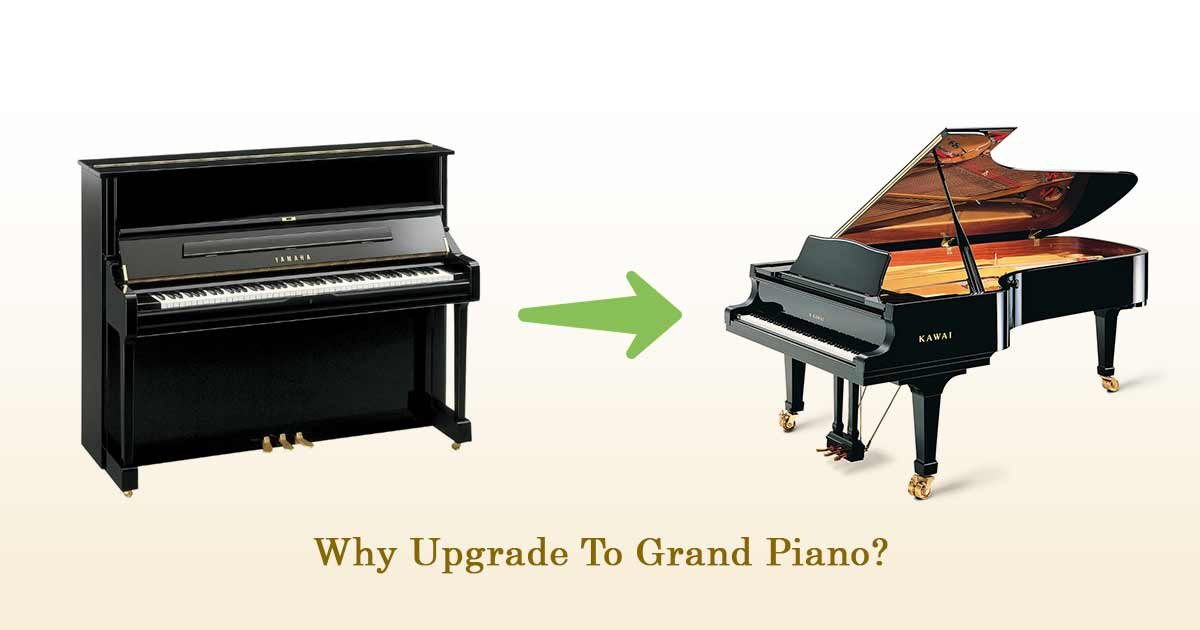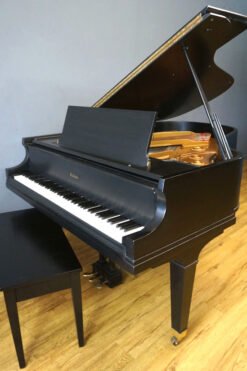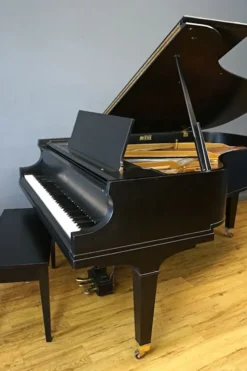News
Upright Piano To A Grand Piano
The question that most pianists encounter down the line is whether to upgrade from an upright piano to a grand piano. The answer lies not only in the visual elegance of a grand but also in its engineering, sound mechanics, and performance potential. Whether it is string length, soundboard resonance, action precision, or control of notes, a grand piano provides musical expression that an upright piano can never match.
Before we explore the advantages, it is necessary to learn the main distinctions between an upright and a grand piano. Afterwards, we will reflect on the factors that contribute to your choice, needs, preferences, and priorities.
What Is an Upright Piano?
An upright piano is a type of acoustic piano in which the strings and soundboard are positioned vertically, with the frame standing upright. This vertical configuration takes up less floor space than a grand piano.
This makes an upright piano ideal for small rooms and compact spaces. The hammer and action mechanism in an upright piano strike the strings from the side rather than from underneath (as in a grand piano), and the action is returned to its resting position with the help of springs. There are different types of upright pianos based on their heights such as:
- Spinet (36–39 inches) – The shortest type, often with less tonal richness due to shorter strings and smaller soundboards.
- Console (40–43 inches) – Slightly larger, with better tone than spinets.
- Studio (44–47 inches) – Popular in schools for their durability and improved sound.
- Professional Upright (48 inches and above) – Offers the best tone among uprights but still falls short of a grand.
What is a Grand Piano?
A grand piano is a type of acoustic piano in which the strings and soundboard are positioned horizontally, with the lid and frame extending outward.
This horizontal design allows for longer strings and a larger soundboard, which produces a more powerful, resonant, and balanced tone than an upright piano. The hammer and action mechanism in a grand piano strike the strings from below, and gravity helps return the action to its resting position, enabling faster repetition and greater control for the pianist.
Grand pianos range in size:
- Baby Grand (4’11”–5’6”): Compact yet still delivers authentic grand tone.
- Medium Grand (5’7”–6’4”): Balanced size and power.
- Parlour or Semi-Concert Grand (6’5”–7’5”): Greater projection for performance halls.
- Concert Grand (8’–9’+): Maximum volume, sustain, and tonal depth for large venues.
Why Upgrade from an Upright Piano to a Grand Piano?
Upgrading from an upright to a grand piano is more than a luxury purchase. It’s an investment in your musical growth, creativity, and enjoyment. Here’s why the change makes such a difference.
Superior Sound Quality
Grand pianos give a deeper, richer sound due to bigger soundboards and longer strings. The soundboard acts as the resonating surface, which amplifies the vibrations of the strings. In grands, the horizontal layout allows strings to vibrate more freely, which enhances the sustain and tonal depth.
Longer bass strings in grands produce a clearer, more resonant low register without the muddiness often heard in uprights. The increased string length also improves harmonic overtones, which gives chords and melodic lines greater warmth and complexity. The result is a wider dynamic range from whisper-soft pianissimo to commanding fortissimo with no tonal distortion.
Price and Cost Factor
An upgrade to a grand is a considerable financial move as well, because grands tend to be more costly to buy and cost a lot more to keep. While a high-quality upright may cost anywhere from $3,000 to $20,000, a new baby grand often starts around $10,000 and can exceed $30,000, with concert grands reaching well over $100,000.
In addition to the initial investment, you must also account for ongoing maintenance costs, which include but are not limited to more frequent tunings and occasional action regulation. However, for many musicians, the long-term value retention, superior craftsmanship, and improved playing experience justify the higher price.
Space Requirements and Other Technical Considerations
Unlike uprights, which fit comfortably against a wall, grand pianos require significantly more floor space and should ideally be placed in a room with good acoustics and stable humidity levels. A baby grand typically needs at least 5 to 6 feet of length, while a concert grand can require 9 feet or more, plus additional clearance for the bench and player movement.
The room should allow the sound to resonate naturally without overwhelming the space. Additionally, factors such as floor strength, lighting, and climate control play a role in ensuring the instrument’s longevity and optimal performance.
Technical Considerations When Upgrading
When upgrading from an upright to a grand, consider:
- Room acoustics: High ceilings and open spaces enhance the sound.
- Maintenance: Grands require regular tuning and occasional regulation to keep the action precise.
- Budget: New baby grands start around $10,000–$15,000, while concert grands can exceed $100,000. Quality used grands are also an option.
- Size: If you’re moving from an upright, a baby grand piano can be a perfect transition.
Full Grand / Concert Grand: Best for professional performers or large venues; provides the fullest resonance and projection.
Baby Grand Piano: Perfect in small spaces, has most of the tonal sustain of bigger grands but at a lesser cost.
Final Thoughts – Why the Upgrade Makes Sense?
Upgrading from an upright to a grand is a big step, and the difference in touch, tone, and resonance is striking. Upright pianos are valued for their modest price and compact size, but they are not built for the full concert experience. In contrast, the longer strings and larger soundboard of a grand piano allow sound waves to resonate more fully, which creates a richer, more balanced tone that fills the room. A smaller baby grand can make a striking advance in all of touch, sound, and artistic enjoyment. A grand piano is worth it when you have the space and the budget.. It’s an investment in better performance and more enjoyable playing.







